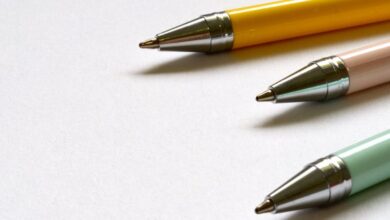What Are the Differences between Inkjet and Gel Pens
When it comes to writing instruments, inkjet and gel pens are among the most popular choices for students, professionals, and artists alike. Both have their unique attributes, making them suitable for different applications. Understanding the distinctions between these two types of pens can help you make an informed decision based on your specific needs.
Composition and Ink Quality
The primary difference between inkjet and gel pens lies in their ink composition. Inkjet pens utilize a liquid dye-based ink that flows freely, allowing for smooth, consistent writing. This type of ink is often known for its vibrancy, producing bright, eye-catching colors. On the other hand, gel pens use a water-based gel ink that combines pigment with a thickening agent, resulting in a smoother application. The gel ink tends to be more opaque and provides a rich, consistent color that stands out on various paper types.
Drying Time and Smudging
One of the most notable differences between the two is drying time. Inkjet ink generally dries quickly, minimizing the risk of smearing during writing. This rapid-drying characteristic makes inkjet pens a preferred choice for those who write quickly or need to take notes on the go. Conversely, gel pens can have a longer drying time, which can lead to smudging if one is not careful. This is especially true on glossy or slick surfaces. However, some newer gel ink formulations have improved drying times, reducing this issue significantly.
Writing Experience
When it comes to the overall writing experience, each pen offers a distinct feel. Inkjet pens often feature a finer tip, allowing for precise lines and detailed writing. This can be advantageous for tasks that require accuracy, such as technical drawing or fine handwriting. Gel pens, on the other hand, typically have a thicker tip, providing a bolder line that can enhance visibility. The smoothness of gel ink also contributes to a comfortable writing experience, making it easier to write for extended periods without fatigue.
Variety of Colors and Styles
Both inkjet and gel pens come in a wide array of colors and styles, catering to various preferences. Inkjet pens often focus on vibrant hues and can easily produce a range of colors thanks to their dye-based ink. Many brands offer refillable options, allowing users to switch colors without needing to purchase a new pen. Gel pens, however, take creativity a step further with metallic, neon, and glitter options, making them a favorite among artists and crafters. The versatility of gel pens allows users to express their individuality through their writing.
Ink Longevity
When considering ink longevity, gel pens tend to have an advantage. The pigment in gel ink is more resistant to fading over time, making it a better choice for archival purposes. Inkjet ink, while vibrant initially, can fade when exposed to light or moisture. If you’re looking to preserve your work for years to come, gel pens are likely the better option. However, it’s essential to store any written documents properly to ensure their longevity, regardless of the ink type.
Cost and Availability
In terms of cost, inkjet pens are generally more affordable, especially in bulk. This makes them an attractive option for students and professionals who require multiple writing instruments. Gel pens, while sometimes pricier, often offer unique features that justify the cost, such as refillable options or specialty inks. Both types are widely available in stationery stores, online, and in general retail locations, making it easy for users to find their preferred writing tool.
Choosing the Right Pen for You
Ultimately, the choice between inkjet and gel pens depends on your specific needs and preferences. If you value quick-drying ink, precision, and affordability, inkjet pens may be the best fit. On the other hand, if you seek a smooth writing experience, vibrant colors, and longevity, gel pens are an excellent choice. Consider what you’ll be using the pen for—be it note-taking, artistic endeavors, or formal writing—and choose the option that aligns best with your requirements. Each pen has its strengths, ensuring that there is a perfect match for everyone’s writing needs.







